LONG BEACH, CALIFORNIA, May 10, 2022 – During a press event at the Advanced Clean Transportation (ACT) Expo, the California Natural Gas Vehicle Partnership (CNGVP) collaborated with Cummins Inc. to display its near-zero emissions X15N 15-liter natural gas engine for the North American freight transportation market. In tandem with the announcement, CNGVP announced that in 2021 the energy weighted carbon intensity value of all natural gas used for transportation fuel in California was below zero at negative 33.36 gCO2e/MJ, according to recently released data from the California Air Resources Board’s (CARB) Low Carbon Fuel Standard (LCFS) program.
The pairing of this engine and fuel combination will enable shippers and carriers to immediately and cost-effectively achieve not only net-zero carbon operations, but negative carbon emissions, enabling them to make unmatched progress toward their corporate sustainability and ESG goals while maintaining operational profitability. Trucks powered by Cummins’ X15N engine will have no operational restrictions and will have a lower total cost of operations (TCO) than their diesel counterparts.
Designed as a solution for Class 8 freight trucks, the Cummins X15N will offer ratings up to 500 hp and 1,850 ft-lbs. of torque, enabling fleets to achieve powerful performance even in mountainous terrains when hauling 80,000-pound of loads or more. The range of a truck with a Cummins X15N 15-liter natural gas engine will only be limited by the driver’s hours of service restrictions, as typical tank packages on natural gas trucks allow for at least 750 miles of driving between refueling, which can be accomplished in about 15 minutes.
This powerful combination of factors is expected to drive meaningful growth of the heavy-duty natural gas truck market and provide both significant economic and environmental benefits to fleet operators. Cummins X15N 15-liter natural gas engine will deliver critical and cost-effective emissions reductions throughout California, where heavy-duty diesel trucks are the state’s largest single combined source of smog-forming NOx and diesel particulate matter, and the fastest-growing source of climate-altering greenhouse gases (GHG) emissions.
“In California, a heavy-duty truck with a Cummins’ 15-liter natural gas engine can provide the greatest GHG emissions benefit compared to all commercially available options, all while significantly outperforming diesel trucks on a cost-per-mile basis,” said Tom Swenson, manager of global regulatory affairs at Cummins and president of CNGVP. “Cummins has received significant fleet customer interest in the X15N, as it provides a very viable and competitive option to reduce the environmental impact for traditional over-the-road long-haul applications.”
Beyond reducing their emissions, fleet operators can save money by slashing their fuel costs with natural gas, which maintained a clear cost advantage over diesel throughout 2021 when diesel prices increased nearly 20% nationwide. On average, the pump price for natural gas in 2021 was $2.32 per diesel gallon equivalent (DGE) for private fuelers and $2.57 per DGE at public fueling stations, with diesel fuel averaging 25% higher on a DGE basis. In 2022, the national average price of diesel has increased to more than $5.00 per gallon, meaning that fueling with natural gas would provide fleets more than a 50% fuel cost savings.
 The Cummins X15N 15-liter natural gas engine will have a similar physical footprint as its existing 12-liter natural gas engine, and Cummins is actively working with major OEMs to integrate the engine. As an additional benefit, Cummins more powerful X15N 15-liter natural gas engine weighs less than the existing 12-liter natural gas engine and about 500 pounds less than a comparable diesel engine. These weight savings translate into important payload capacity gains for fleet operators, further improving the TCO of heavy-duty natural gas trucks.
The Cummins X15N 15-liter natural gas engine will have a similar physical footprint as its existing 12-liter natural gas engine, and Cummins is actively working with major OEMs to integrate the engine. As an additional benefit, Cummins more powerful X15N 15-liter natural gas engine weighs less than the existing 12-liter natural gas engine and about 500 pounds less than a comparable diesel engine. These weight savings translate into important payload capacity gains for fleet operators, further improving the TCO of heavy-duty natural gas trucks.
In 2021, approximately 98% of natural gas used for transportation in California came from methane emitted by renewable sources, including landfill waste, livestock manure, wastewater treatment plants, food and green waste, dead trees, and agricultural waste. Capturing and harnessing the methane emissions from these sources as a renewable fuel is the most immediate and effective step that can be taken to reduce GHG emissions, as reported by the world’s leading climate scientists during the COP26 summit in Scotland in November 2021.
Growth in the volume of swine and dairy gas being reported into California’s LCFS program is the main factor continuing to drive the carbon intensity value of natural gas transportation fuel lower. With new production facilities continuing to come online, California-produced RNG is anticipated to have an average energy weighted carbon intensity of negative 101.74 gCO2e/MJ by January 2024.
“With the carbon intensity value of natural gas transportation fuel continuing to plunge further below zero as California’s RNG supply ramps up, the economic and environmental benefits of operating trucks with the Cummins X15N 15-liter natural gas engine will continue to improve for years to come,” said Ashley Remillard, vice president of legal and government affairs at Hexagon Agility, and vice president of CNGVP.
To learn about the near-zero emissions Cummins X15N engine, visit https://www.cummins.com/engines/natural-gas
To learn more about the benefits carbon-negative RNG, visit www.cngvp.org









